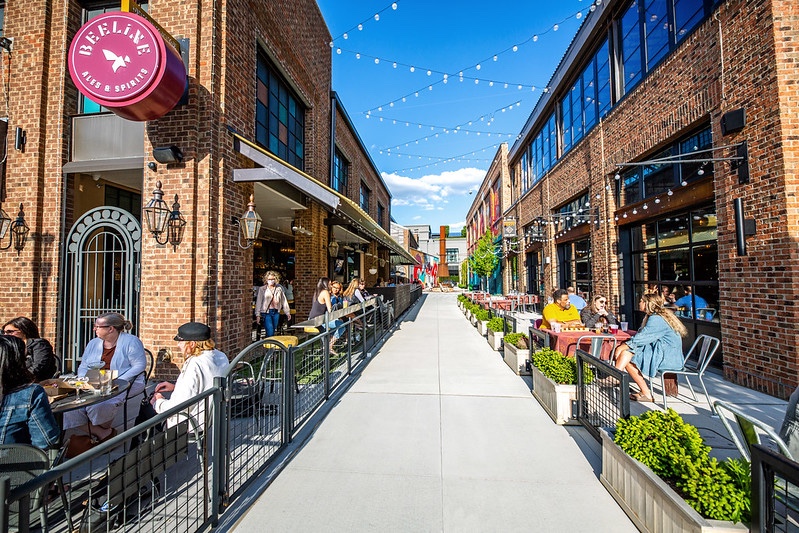How Restaurants, Retail and Mixed-Use Environments Are Capitalizing on a Surging F&B Market
3 Min Read By Spencer Jordan
At a time when F&B is a thriving and Americans are spending more than ever dining out, centers need to be vigilant about combating stagnation. Developers should be working closely with their F&B partners to think creatively about ways to reinvest in and refresh their spaces and increase connectivity.
For nearly 25 years, Easton Town Center in Columbus, Ohio has worked to establish itself as a premier mixed-use environment with one of the largest and most influential food & beverage programs in the Midwest. As a longstanding lifestyle development, every year brings new opportunities to evolve its F&B offerings. New local, national, and international operators and first-to-market concepts have come to Easton to test new ideas and establish a regional foothold. And, most notably, long-term operators have chosen to reinvest in their spaces and add new restaurant concepts. While the scale of Easton may be difficult to replicate, a heavy emphasis on F&B and integrated dining concepts makes it an ideal prism through which to view how restaurants are approaching lease renewals in retail and lifestyle centers.
A Mutually Beneficial Relationship
Appreciating the relationship between restaurants and mixed-use environments is a great place to start, if only to clarify leasing decisions and optimize operational and design details. Well-designed outdoor projects feel organic, immersive, and enjoyable versus purely transactional retail. Projects where people want to spend time naturally offer more opportunities for dining out; and with office, residential and retail connected, the result is a built-in base of potential diners who support both strong daytime and evening footfall. How strong is the appeal of a strong mix of restaurants and retail? Consider that Easton was the most visited outdoor lifestyle center in the nation last November and December.

Understandably, retailers want to be around strong F&B because they appreciate the draw and the co-tenancy benefits. For example, at a time when virtually every restaurant or bar would like to add more outdoor seating, patio space is simply much easier to come by in a lifestyle center.
Reinvest and Reimagine
When Easton first opened in 1999, shopping centers tended to concentrate F&B within two areas: on pads along a ring road or within an interior food court. The decision to weave restaurants, cafés, and specialty food items alongside national retail brands formed the building blocks of the food & beverage program that Easton’s customers enjoy today. More than ever, restaurants are a critical part of the inline merchandising mix, generating approximately $160 million in annual F&B volume.
Easton’s restaurant operators are reinvesting and reimagining concepts. The center currently anticipates over 45,000 square feet of remodels and 33,000 square feet of new F&B concepts to be completed and open by the end of 2024.
Creative and Refreshing Makeovers
For center owners and operators, keeping your F&B offerings fresh and relevant is obviously important. However, supporting reinvestment from F&B operators may require thinking both literally and figuratively outside the box. Options to upgrade existing units include:
Adding outdoor space or converting uncovered dining terraces to three or four-season patios;
- Encouraging efficient kitchens and back-of-house layouts;
- Accommodating flexible operational models to handle pickup, carryout and delivery;
- Upgrading furniture, fixtures, and equipment; and
- Introducing experiential elements and celebratory group dining spaces for special events.
When financially and logistically possible, centers may consider creative partnerships and proactive investments to support new concepts. From startup space and test kitchens to JV partnerships in new concepts, nontraditional F&B partnerships can be a rich source of exciting new ideas.
Being thoughtful and strategic in building a diverse-but-complementary F&B tenant mix will help maximize co-tenancy, drive traffic and increase sales. The result will be established restaurants that want to evolve accordingly, making a reinvestment not just in themselves, but in the future of the center.


